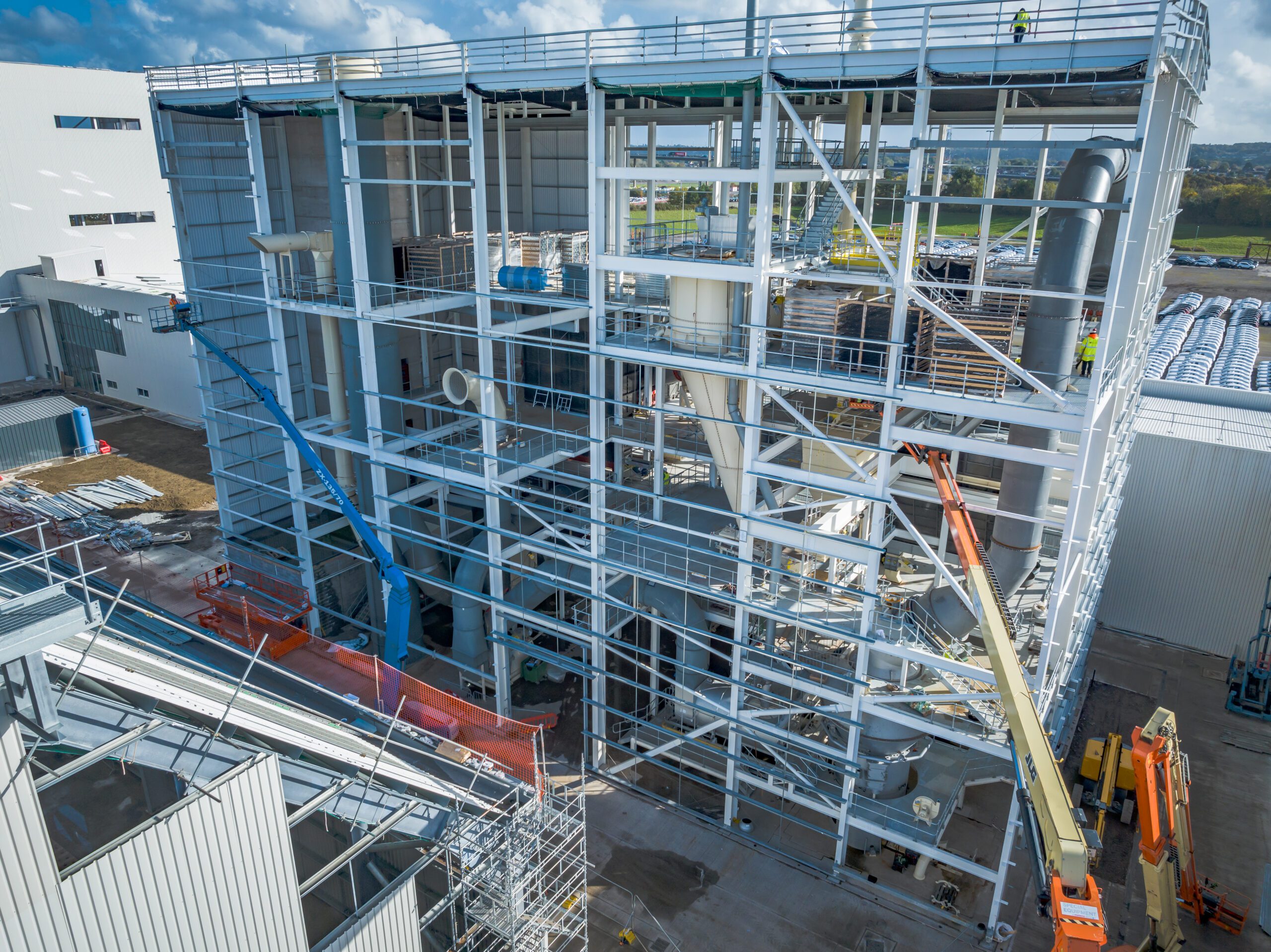As manufacturers look to maximise efficiency and enhance production lines with new technologies, the advanced manufacturing industry is seeing exponential growth. This is in no small part due to the rise in ‘reshoring,’ where global manufacturers create local manufacturing bases to futureproof their businesses against increasing geopolitical uncertainty.
When it comes to managing construction projects that combine tight build schedules and major investment with complex technology installations at scale, manufacturers are faced with significant challenges. As the race to take advantage of advanced manufacturing ramps up, how can manufacturers and construction specialists take a collaborative approach to ensure sites are ready without delay?
Here is an outline of how our team approached an ambitious construction project for our customer, Etex.

Efficiency through supply chain collaboration
Earlier this year, leading lightweight construction materials manufacturer Etex expanded its Bristol production facility, marking its largest-ever production investment of €200 million (£170 million) and doubling the site’s capacity. The facility has quickly become Etex’s most efficient plasterboard production line in Europe, enabling its Siniat brand to produce over 98% of its board portfolio in a single location.
Constructing a facility of this size and nature brings with it significant complexity, beyond what may be expected in a typical manufacturing facility build. In an advanced manufacturing facility, there is no such thing as a one size fits all approach.
When approaching the construction of the calcination plant at the Bristol facility, it was essential McLaughlin & Harvey attended a series of workshops ahead of construction to determine how best to approach the complex nature of the technology.
The calcination plant, where gypsum slurry is transformed into plasterboard products, is at the heart of the plasterboard manufacturing process As part of Etex’s Road to Sustainability 2030 ambitions, it integrates a range of technologies to enable rainwater harvesting and support post-consumer gypsum recycling.
Unlike many manufacturing facilities, we knew this build would require extensive collaboration with the Etex team, its technology and engineering supply chain, and other contractors working across the site. What set this project apart was the need to factor the large scale and complex technology required for the calcination process into the design and scheduling from the very beginning.
By working closely with the Etex team and the previous teams responsible for a similar, but much smaller site at Ferrybridge in 2021, we were able to collaborate and take learnings from previous sites to ensure the build was completed in the most efficient way.
Building for advanced manufacturing one step at a time
When planning a complex, advanced manufacturing construction process like the one at Etex’s Bristol facility, it’s important to recognise that the schedule can’t follow a straightforward “build the framework, add the façade, and complete the interior” approach. The technology and equipment involved must be integrated at various stages throughout the build. Often, especially in the case of a calcination plant, this advanced technology is simply too large or complex to be installed after completion. That’s why we had to take a unique approach to the scheduling from the outset.
Starting at the pre-construction phase in 2021, we worked closely with Etex’s supply chain on 4D digital planning to map out the project in stages.
This enabled us to reduce hold points from 12 to 3 in order to incorporate engineering technologies and equipment at core stages, rather than on a more piecemeal basis as had been done in previous schemes. This meant we were able to reduce the construction schedule by 12 weeks. Without effective collaboration, this would not have been possible.
Many engineering and construction projects involve a collaborative approach, however, the main difference in the Etex project was that all parties were willing to set aside traditional thinking and consider the calcination construction works from first principles. This resulted in fostering a “one-team” approach where tried and tested assumptions were rigorously questioned and the parties challenged each other to identify alternative methods to carry out the works more efficiently. The benefits of this approach were wide reaching as the enhanced teamwork it produced translated into all other aspects of the project.
Advanced manufacturing is growing rapidly as more manufacturers seek to reap the benefits of enhanced efficiencies offered by new technologies. Early collaboration with contractors, design teams, engineers, and the supply chain is essential for manufacturers aiming to integrate these technologies seamlessly into production lines without significant delays.
To find out more about more information on how McLaughlin & Harvey can support with advanced manufacturing construction projects get in touch with our expert teams.